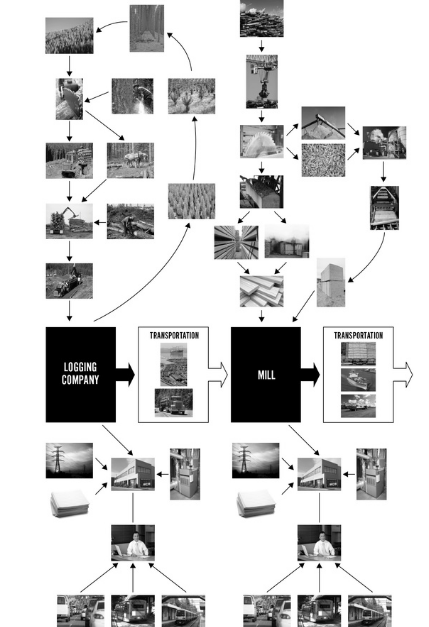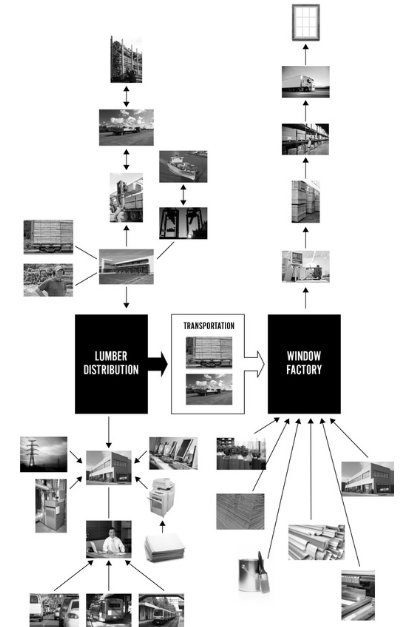International Carbon Equivalent Mechanism Attributed to Neutrality (ICEMAN) is a methodology that applies established sciences and protocols developed for the calculation of greenhouse gas emissions to provide a quantitative measure of factors that reduce or mitigate greenhouse gas emissions. This quantitative measure then becomes an attribute by which consumers and buyers of products can evaluate a product’s carbon footprint prior to purchase.
ICEMAN is an innovative mechanism that measures the total greenhouse gasses emitted throughout every part of the supply chain—for the product itself and for all the materials and components it contains. The calculation encompasses the taking of raw material from the ground, the entire manufacturing process, business and manufacturing operations used in the production of a product, and the transportation of the product to market. In this way, the ICEMAN mechanism calculates and adds up the carbon footprint of a product throughout the supply chain, for every component and material—every time it is transported, every time a business operation touches it, all the way back to when the natural resources used to create its components are taken out of the ground.

This mechanism is called the ICEMAN CarbonFactor. The mechanism begins accounting for greenhouse gas emissions from the operation that takes the natural resource out of the ground. It includes emissions created by the transportation of the natural resource to the next part of the manufacturing process, emissions created by the process of converting the natural resource into a usable material or subcomponent, emissions created by the transportation of that material or subcomponent to the next part of the process, emissions created by the next part of the manufacturing process, and on through the entire supply chain until the final product is finished.
The Carbon Factor is based on accepted sciences and standards developed as a result of established climate change protocols. Since the world began focusing on greenhouse gas emissions, scientists and organizations—both governmental and nongovernmental—have developed complex sciences and protocols to establish and standardize corporate accounting and mathematical calculations of greenhouse gas emissions. One example is WRI’s Greenhouse Gas Protocol. WRI is composed of a diverse group of government and non-government organizations, from the UN to the US Green Building Council. The WRI Greenhouse Gas Protocol currently forms the foundation for the ICEMAN Carbon Factor calculations.
Standards such as this will be continuously adopted and integrated into ICEMAN, since ICEMAN is the application of this science. Any time the protocols change, we adapt ICEMAN to match the most up-to-date scientific information.
The ICEMAN Carbon Factor will also take into account actions that companies are already taking that may impact overall carbon emission calculations, such as sustainability, renewable energy usage, carbon offsets, the acquisition of carbon credits, and any carbon emissions mitigation or reduction programs, such as carbon sinks, clean development mechanisms, or joint implementation projects. These carbon offsets will be approved, certified, and tracked separately by the Carbon Factor Offset to maintain credibility and a high standard in accepting carbon offsets for the reduction of a product’s carbon footprint.
The calculations of the reduction of carbon emissions associated with programs in reducing or mitigating carbon emissions will follow regular well-established and standardized calculations. Using those calculations, they will be assigned their equivalent as a negative number, thereby reducing the overall carbon emissions value known as the Carbon Factor.
The Carbon Factor Offset is a measurement of the carbon credits required to offset the Carbon Factor. The Carbon Factor Offset value is tracked alongside the Carbon Factor value. The total carbon offset values of manufactured products are the pro-rata of the offsets associated with the raw materials, components, subproducts, or services that make up the product. At any point along the supply chain, carbon emissions may be offset in part or in whole to become carbon neutral or partially carbon neutral.

The calculation of the reduction of carbon emissions associated with reduction programs or mitigation will follow well-established and standardized protocols. The reduction will be subtracted from the overall carbon emissions value, lowering the product or service’s Carbon Factor. This formula is visualized here, showing the greenhouse gasses involved in creating a single window.
These quantitative measures are then converted into an indexing system that represents a percentage of carbon neutral, which can then be listed as a simple index number on a package or advertisement. For example, an index number of fifty indicates the product, process, or service is 50 percent carbon neutral; an index number of one hundred indicates it is 100 percent carbon neutral. The index number mathematically defines the greenness of a product based on the product’s embodied greenhouse gas emissions.
The ultimate goal is for all products to fully offset their embodied greenhouse gas emissions. Not all products will be able to achieve full carbon neutrality. That’s why a measurement system like ICEMAN’s, based on a percentage to carbon neutral, will be most useful for manufacturers and consumers alike.
